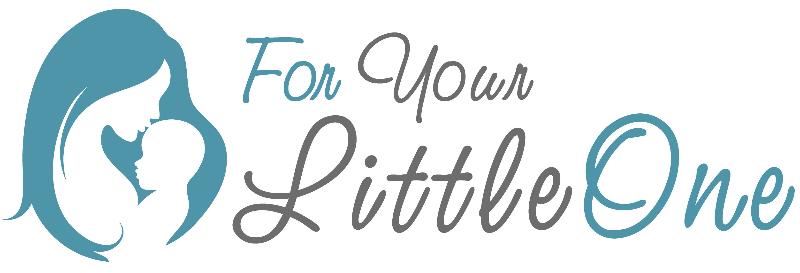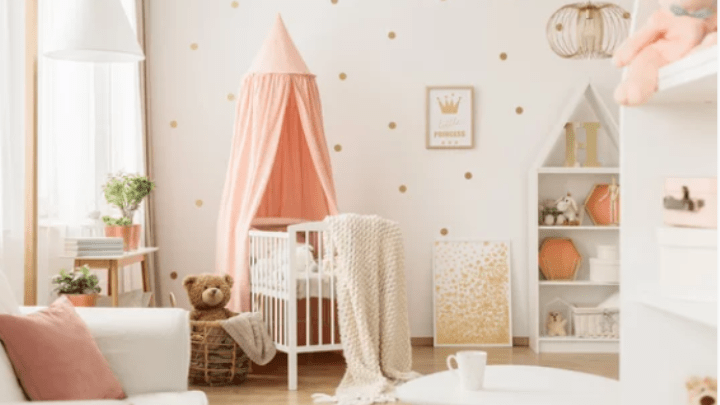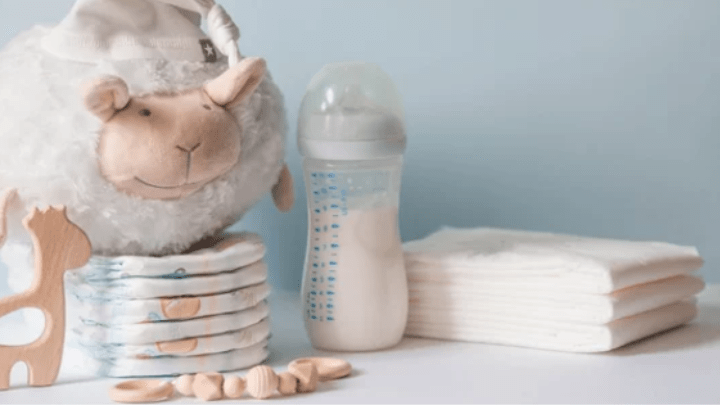Introduction
As you start preparing for your baby's arrival, one of the most important decisions you'll make is choosing the right crib. After all, it's where your little one will spend countless hours sleeping, playing, and growing.
But with so many cribs on the market, how do you know which one is the safest for your baby? Don't worry, we've got you covered. In this ultimate baby crib safety guide, we'll walk you through everything you need to consider when choosing a crib that meets the highest safety standards. From materials and construction to mattress fit and safety certifications, we'll leave no stone unturned. So, let's dive in and ensure your baby has the safest crib possible.
Crib Safety Standards to Look For
When it comes to choosing a baby crib, safety should always be the top priority. Look for these important crib safety standards to ensure that your baby sleeps in a secure and comfortable environment:
- Slats Spacing: The spacing between the slats of the crib is crucial. It should be no more than 2-3/8 inches apart to prevent your baby from getting their head, limbs, or body trapped between them. This helps ensure that your baby's safety is not compromised.
- Sturdy Construction: A well-built crib should be sturdy and stable without any wobbling or loose parts. Check for solid construction and quality materials that can withstand movement and pressure without posing a risk to your baby's safety.
- Fixed Sides: Cribs with fixed sides are considered safer than those with drop sides, as they eliminate the risk of accidental collapse or detachment of the sides. Fixed sides provide stability and reduce the chances of accidents occurring.
- Mattress Support: The mattress support system in the crib should be adjustable to different heights as your baby grows. Ensure that it securely holds the mattress in place and doesn't pose any danger of collapsing or shifting under your baby's weight.
By prioritising these essential crib safety standards, you can rest assured knowing that you have chosen a safe environment for your precious little one to sleep soundly in. Remember to always follow manufacturer's instructions regarding assembly, use, and maintenance for optimal safety conditions.
The Dangers of Used or Hand-Me-Down Cribs
When it comes to choosing a baby crib, safety should be your top priority. While it may be tempting to save some money by using a used or hand-me-down crib, it's important to understand the potential dangers associated with these options.
First and foremost, older cribs may not meet current safety standards. Safety regulations for cribs have evolved over the years, with stricter guidelines put in place to protect babies from potential hazards. This means that an older crib may have spacing between slats that are too wide, creating a risk of entrapment or strangulation for your little one.
Additionally, used cribs may have worn-out or damaged components that can pose a safety hazard. Over time, parts like screws, bolts, and mattress supports can become weakened or loose. This could lead to the crib collapsing or creating gaps where your baby's limbs could become trapped.
Furthermore, it's important to consider the history of a used crib. If it has been involved in any accidents or recalls in the past, there may be hidden structural damage that could compromise its safety.
While you may be able to find a used crib in good condition from a trusted source, it's crucial to thoroughly inspect it for any potential issues before making your decision. However, if you want peace of mind and assurance that your baby will be sleeping in the safest environment possible, investing in a new crib that meets current safety standards is always recommended. Remember, ensuring your baby's safety is worth every penny spent on a new crib.
Crib Slats: How Wide Is Too Wide?
When it comes to choosing a safe baby crib, one important factor to consider is the width of the crib slats. This is to prevent a baby's head from getting stuck between the slats, which can lead to serious injuries or even suffocation.
So why is the width of crib slats such a crucial safety feature? Here are a few reasons:
- Preventing Entrapment: Wide gaps between crib slats can pose a serious risk of entrapment. Babies are naturally curious and can easily slip their heads or limbs through wide slats, potentially getting trapped. By choosing a crib with slats that are the recommended width, you can ensure that your baby's movements are restricted and they are safe from getting stuck.
- Avoiding Injuries: Narrower slats provide a solid barrier and prevent babies from accidentally falling out of the crib. Wide slats, on the other hand, increase the risk of falls and injuries. By selecting a crib with properly spaced slats, you can minimise the potential for accidents and create a secure sleeping environment.
- Meeting Safety Standards: Manufacturers that adhere to safety standards will ensure that their cribs have slats that meet the CPSC guidelines. By choosing a crib from a reputable brand, you can have peace of mind that the crib has undergone rigorous testing and meets all necessary safety requirements.
Remember, when it comes to the safety of your baby, it's important to prioritise features like crib slat width. By selecting a crib with properly spaced slats, you can create a secure and comfortable sleeping environment for your little one.
Corner Posts, Bumpers and Mobiles: Potential Hazards to Avoid
When it comes to choosing a baby crib, safety should be your top priority. One important factor to consider is the presence of corner posts, bumpers, and mobiles. While these may seem like harmless decorative additions to the crib, they can actually pose potential hazards to your baby's safety.
### Corner Posts
Corner posts are vertical rods that extend from the corners of the crib. While they may add a decorative touch, they can be dangerous as they can catch your baby's clothing or create a space where your baby's head or limbs can become trapped. To ensure maximum safety, it is recommended to choose a crib without corner posts or opt for one where the posts are flush with the crib's end panels.
### Bumpers
Bumpers are padded materials that are placed around the inside of the crib to prevent your baby from hitting their head against the hard crib slats. However, they can pose a suffocation risk if your baby's face becomes pressed against them. It is advised to avoid using bumpers or opt for breathable mesh bumpers that allow for better air circulation.
### Mobiles
Mobiles are often used to entertain and soothe babies in their cribs. However, they can pose a strangulation hazard if the strings or cords become entangled around your baby's neck. To ensure safety, choose a crib without a mobile or opt for one with a securely attached mobile that is out of your baby's reach.
By being mindful of these potential hazards and making informed choices, you can ensure that your baby's crib is a safe and secure environment for them to sleep and play in.
Mattress Fit: How to Ensure Your Baby's Mattress Is Safe
When it comes to choosing a baby crib, ensuring that the mattress fits properly is crucial for your baby's safety. Here are some tips to help you make sure that your baby's mattress is safe and secure:
- Measure the crib: Before purchasing a mattress, measure the inside dimensions of the crib to ensure that the mattress will fit snugly. The mattress should fit tightly against the sides of the crib, with no gaps that could pose a risk to your baby.
- Check for gaps: Once you have the mattress in place, carefully inspect the edges to make sure there are no gaps between the mattress and the crib frame. Gaps can increase the risk of entrapment or suffocation, so it's important to eliminate any spaces where your baby could become trapped.
- Test the firmness: A firm mattress is essential for your baby's safety. Press down on the mattress in various areas to ensure that it remains firm and doesn't conform to your hand. A soft mattress can increase the risk of Sudden Infant Death Syndrome (SIDS) or suffocation.
- Choose the right size: Make sure that the mattress you choose is the correct size for your crib. A mattress that is too small can become a suffocation hazard if it slips between the crib sides, while a mattress that is too large can create gaps that pose a risk to your baby.
By following these tips, you can ensure that your baby's mattress fits properly and provides a safe sleeping environment. Remember, a safe crib is essential for your baby's well-being, so take the time to choose a mattress that meets all safety guidelines.
Conclusion
In conclusion, choosing the safest baby crib for your little one is a top priority. It's important to do your research, read reviews, and consider the specific features that will provide the highest level of safety. Remember, the crib should meet all current safety standards, have sturdy construction, and be free from any hazards such as drop sides or loose hardware.
Additionally, make sure to follow the manufacturer's instructions for assembly and use, and regularly inspect the crib for any signs of wear or damage. And don't forget about creating a safe sleep environment by using a firm mattress, fitted sheets, and removing any pillows or blankets that could pose a suffocation risk.
By taking these precautions and investing in a high-quality, safe crib, you can have peace of mind knowing that your baby is sleeping in a secure and protected space. Visit our shop for more advice and guidance for new parents like you!



